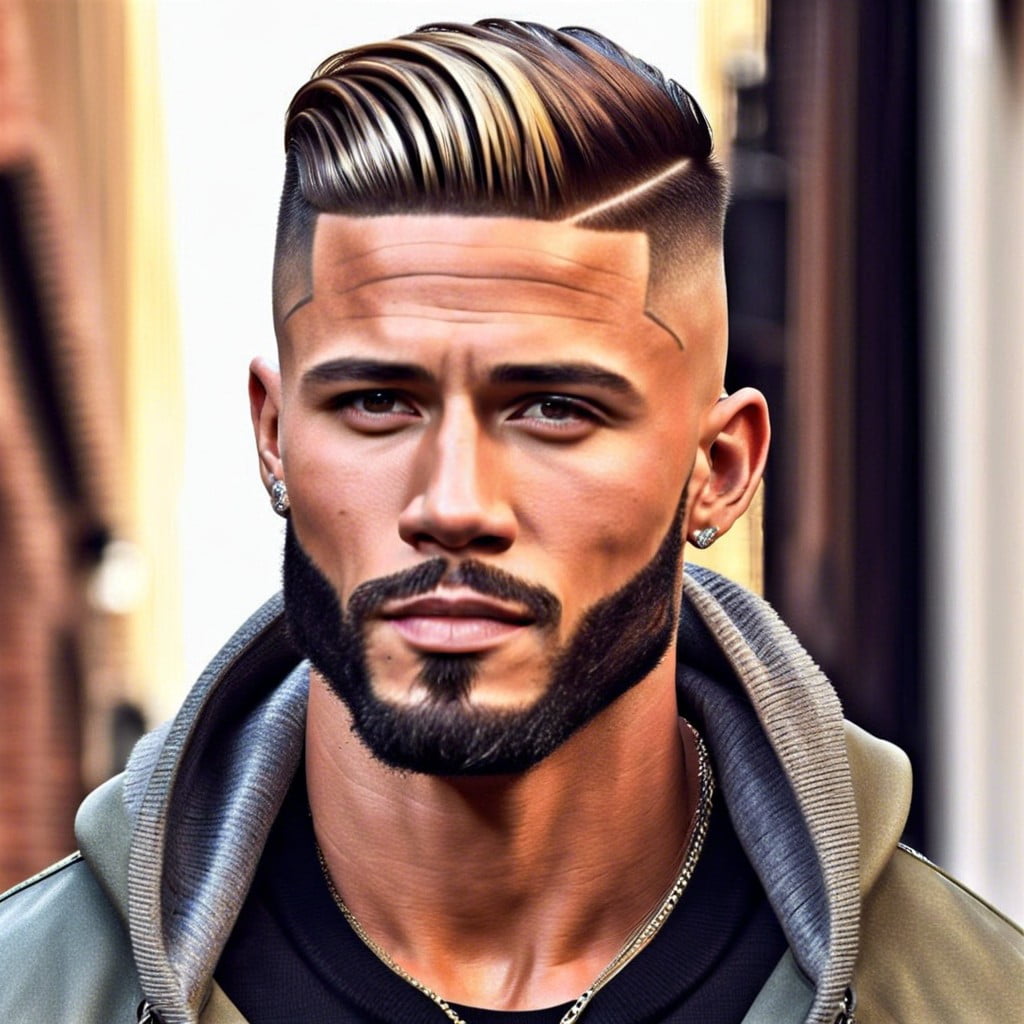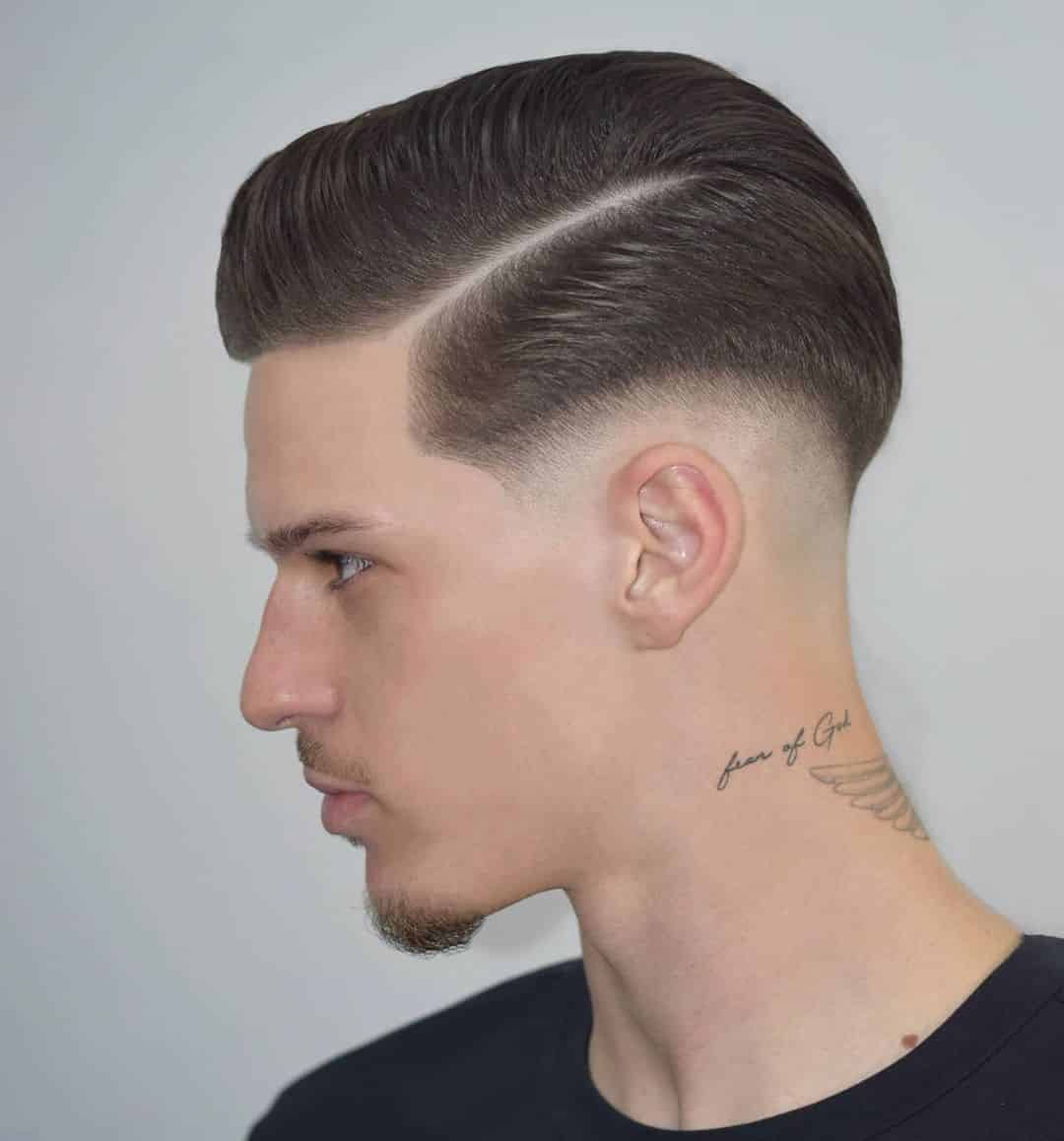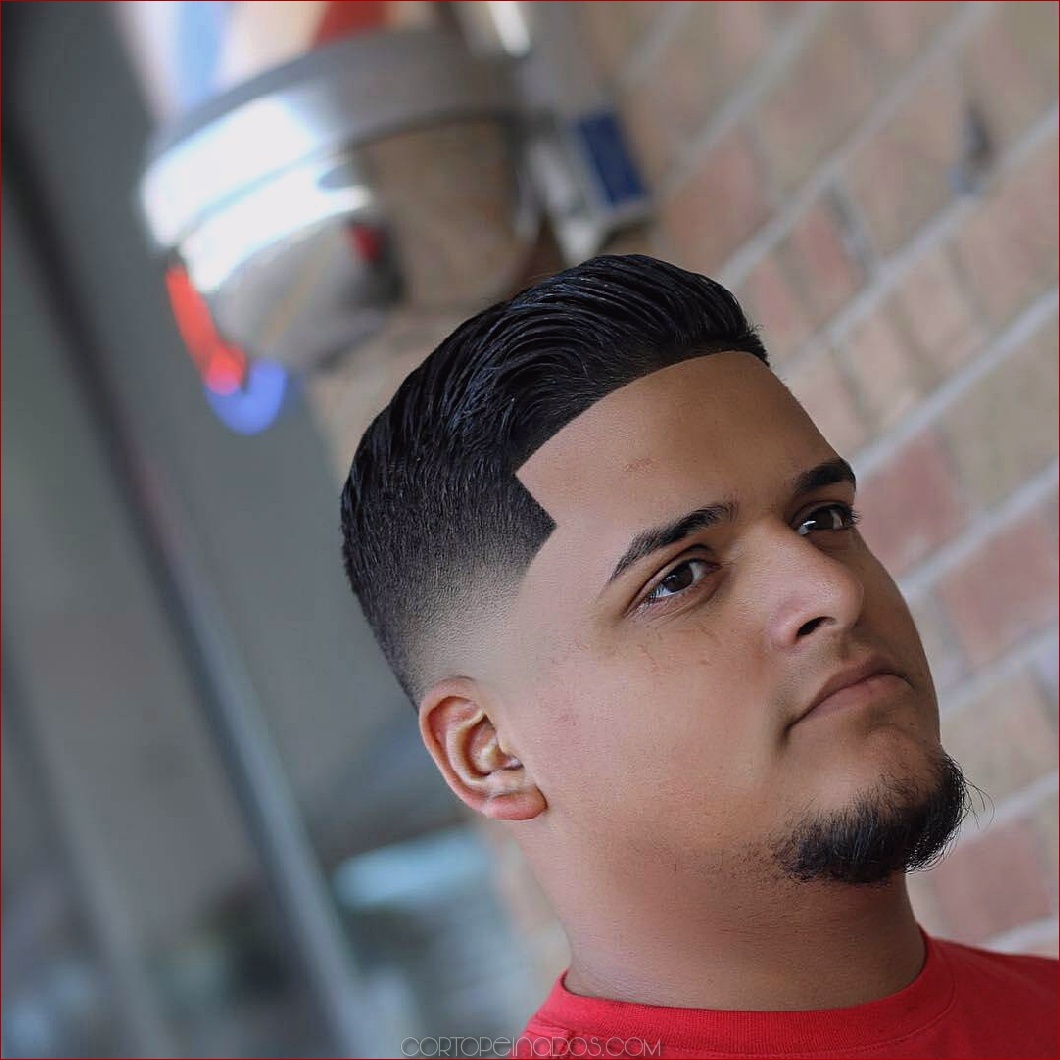Mastering The Low Fade: Your Ultimate Guide To A Timeless Cut
When it comes to men's hairstyles, few cuts offer as much versatility and style as the low fade. It's a look that has truly become a classic in recent years, giving rise to countless variations and gracing the heads of global icons. From football legends like Messi, Cristiano Ronaldo, and David Beckham to music sensations like Maluma, the low fade has cemented its place as a universally admired haircut.
This article will dive deep into the world of the low fade, exploring its defining characteristics, why it remains incredibly popular, and how you can achieve and maintain this sophisticated style. Whether you're considering a fresh new look or simply want to understand the nuances of this iconic cut, prepare to learn everything you need to know about the low fade, also known as the low tapper fade.
Table of Contents
- What Exactly is a Low Fade?
- The Allure of the Low Fade: Why It's a Timeless Choice
- How to Achieve the Perfect Low Fade: A Step-by-Step Insight
- Styling Your Low Fade for Every Season and Occasion
- Low Fade vs. Mid Fade vs. High Fade: Finding Your Ideal Height
- Celebrity Endorsement: The Global Impact of the Low Fade
- Maintaining Your Low Fade: Keeping It Sharp
- Final Thoughts on Embracing the Low Fade
What Exactly is a Low Fade?
To truly understand the low fade, we must first grasp the essence of "low" in this context. The word "low" inherently signifies having a small upward extension or elevation, being near the ground, or not high. If something is low, it is close to the ground, to sea level, or to the bottom of something. Think of a low ceiling that can be dangerous for a very tall person, or a low voice that can barely be heard. It implies being of little height or elevation, or depressed below the surrounding surface or normal elevation. For instance, "the river is low this time of year" suggests less than average depth.
In the realm of hairstyling, the low fade, or "corte desvanecido bajo," applies this concept directly to the haircut. It is a masculine haircut characterized by a low gradient, starting close to the hairline and progressively reducing towards the neck. This means the faded area begins relatively close to the ground, or in this case, the ears and neckline. The height of this type of fade typically extends from the base of the sideburns up to about one and a half centimeters (approximately 0.6 inches) upwards. It is known for its smooth transition, making it suitable for various hairstyles and hair types, from straight to wavy.
Unlike other fade types, the low fade rises but slightly from the surface of the head, creating a subtle yet impactful transition. It's about a gradual reduction in hair length that begins very close to the natural hairline, just above the ears and around the nape of the neck. This strategic placement ensures that the fade is less dramatic than its mid or high counterparts, offering a cleaner, more understated look. The result is a haircut that is both clean, sharp, and easy to manage, making it a timeless choice for men seeking a refined aesthetic.
- Eli 1301 Spectrum
- Boston Praise Radio
- Noa Netanyahu Roth
- Martin Henderson Wife
- Paige Vanzant Leaked Nudes
The Allure of the Low Fade: Why It's a Timeless Choice
The low fade isn't just a trend; it's a staple in men's grooming, offering a blend of sophistication and modern edge. Its enduring popularity stems from several key attributes that make it incredibly appealing to a wide demographic.
Versatility for Every Hair Type
One of the primary reasons for the low fade's widespread appeal is its remarkable versatility. It seamlessly adapts to various hair types, from straight and fine to thick and wavy, and even curly textures. This adaptability means that almost anyone can pull off a low fade, regardless of their natural hair characteristics. The subtle nature of the fade allows the focus to remain on the hair on top, which can be styled in countless ways. Whether you prefer a sleek, combed-back look, a textured crop, or a voluminous pompadour, the low fade provides a clean canvas that complements almost any top style.
Furthermore, the low fade's gentle transition ensures that it doesn't create a stark contrast that might clash with certain hair types or face shapes. Instead, it offers a harmonious blend that enhances the overall appearance, making it a universally flattering choice. This inherent adaptability is a significant factor in its timeless appeal, ensuring it remains relevant across evolving fashion trends.
The Perfect Balance for Volume
Low fade haircuts are excellent for balancing hairstyles with a lot of volume on top. This is where the cut truly shines, as it allows for a striking contrast effect. By keeping the sides and back short and clean, the low fade draws attention to the fuller, longer hair on the crown. This creates a visually appealing silhouette that is both modern and classic. For men who prefer to maintain significant length or volume on top, the low fade provides the necessary structure and neatness around the lower perimeter, preventing the overall look from becoming unruly or disheveled.
With less contrast and more texture on the sides, low fade haircuts are ideal for medium to long length hairstyles that require a thicker appearance. This subtle approach to fading means that the transition from short to long is less abrupt, allowing the hair to appear denser and fuller where it matters most. It's this intelligent design that makes the low fade not just a haircut, but a strategic styling choice for those who appreciate both volume and precision.
How to Achieve the Perfect Low Fade: A Step-by-Step Insight
Creating a low fade requires precision, patience, and a keen eye for detail. While it's best left to a skilled barber, understanding the process can help you communicate your desired look effectively. The goal is a smooth, seamless transition with no harsh lines of demarcation.
The Starting Point and Initial Shaping
The journey to a perfect low fade begins with defining the lowest point of the fade. As mentioned, the height of this type of fade goes from the base of the sideburns up to about one and a half centimeters (1.5 cm) upwards. This is the crucial starting line. Once this base is established, the barber will begin to shape the cut, often starting with a longer guide comb, such as a number 1 or 2, to remove the bulk of the hair in the lower section. The process involves systematically working around the entire contour of the head, ensuring consistency in length and shape on both sides. It's about laying the foundation for the gradual transition that defines the low fade.
This initial step is critical for setting the stage. It's about establishing the lowest point where the hair will be shortest and creating a clean perimeter. This foundational work ensures that as the barber moves to shorter guard sizes, the fade will develop smoothly and symmetrically around the head.
The Art of the Gradual Transition
The essence of any fade, especially a low fade, lies in its gradual transition. Once the initial shape is established with a longer guide (e.g., a number 1 or 2), the barber will switch to a shorter guide comb (for example, a number 2 or 1, or even a 0.5 or 0 for a skin fade effect) and repeat the fading process. This time, the focus is solely on the lower part of the fade, working upwards in small, controlled movements. The key is to ensure that as you move up, the fade is gradual and that there are no lines of tone separation. This means blending meticulously, often using a "clipper over comb" technique or adjusting the clipper's lever to create minute variations in length.
After giving the entire shape with, for example, a number 1 guide, and ensuring both sides of the head have the same measurement, the barber then proceeds with a number 2 guide. They must leave a space of one and a half centimeters (1.5 cm) in height for the 1.5 guide, remembering to use the brush to clear away cut hair and constantly check for evenness. This meticulous process is repeated with progressively shorter guards, carefully blending each section into the next, creating that signature smooth, barely-there transition that makes the low fade so appealing. The goal is a seamless gradient, where the hair length changes almost imperceptibly from skin-short to longer hair on top.
Styling Your Low Fade for Every Season and Occasion
The low fade's adaptability extends beyond hair types to seasonal and stylistic versatility. This haircut can be easily adapted to suit various occasions and even the changing seasons, making it a truly dynamic choice for modern men.
For instance, you can adapt your low fade to suit the summer sun with textured tops and sharp lines that keep you cool and stylish. The shorter sides of the fade help to reduce bulk and keep you feeling lighter in warmer weather, while the textured top can be styled to add a breezy, effortless vibe. Think of a messy crop or a slightly disheveled quiff, which complements the clean lines of the fade.
Conversely, embrace the fall spirit by allowing for more volume on top, coupled with a neat fade to balance heavier clothing textures. As the weather cools and wardrobes shift to thicker fabrics like wool and tweed, a slightly fuller top can provide a harmonious balance. The low fade ensures that despite the added volume on top, the overall look remains sharp and polished, preventing a top-heavy appearance. This demonstrates how the low fade isn't just a static cut, but a foundation upon which a variety of looks can be built.
Moreover, the low fade with medium volume on top is described as "sexy and..." (presumably implying attractive or stylish). This combination offers a balanced aesthetic that is both modern and approachable. It's a look that can transition effortlessly from a professional setting to a casual outing, making it an incredibly practical and fashionable choice for any man.
Low Fade vs. Mid Fade vs. High Fade: Finding Your Ideal Height
While the low fade is celebrated for its subtlety, it's important to understand how it differs from its counterparts: the mid fade and the high fade. The distinction primarily lies in where the fade begins on the head, influencing the overall contrast and impact of the haircut.
The low fade, as we've explored, starts very close to the hairline, just above the ears and around the nape of the neck. It offers the least amount of contrast, making it ideal for those who prefer a more conservative or blended look, especially with longer hair on top. It's about a soft, understated transition that keeps the focus on the hair's natural flow and volume.
The mid fade, on the other hand, sits somewhere between the high fade and the low fade. Here, the level of the haircut is neither too low nor too high. If you feel that the high fade is too striking or attention-grabbing for your taste, and the low fade leaves too much hair for your preference, then the mid fade is your ideal option. It typically starts around the temples and gradually fades upwards, offering a balanced level of contrast that is noticeable but not overly dramatic. This makes it a popular choice for those seeking a versatile look that blends professionalism with modern style.
The high fade is the most dramatic of the three, with the fade beginning much higher up on the head, often around the parietal ridge (the widest part of the head). This creates a sharp, bold contrast between the very short sides and the longer hair on top, resulting in a more edgy and pronounced look. It's a statement cut that draws immediate attention to the top of the head.
Choosing between these three depends entirely on personal preference, desired level of contrast, and the style you aim to achieve. The low fade remains a top choice for its understated elegance and broad appeal, making it a perfect starting point for anyone exploring faded haircuts.
Celebrity Endorsement: The Global Impact of the Low Fade
The low fade's journey from barbershops to global prominence has been significantly bolstered by its adoption by some of the world's most recognizable figures. When footballers like Lionel Messi, Cristiano Ronaldo, and David Beckham, or singers like Maluma, consistently sport a particular haircut, it inevitably sparks a worldwide trend. These are just some of the globally known faces who wear this haircut, showcasing its universal appeal and adaptability across different personal styles and professions.
Their choice of the low fade underscores its ability to project an image of sophistication, modernity, and effortless cool. Whether on the football pitch, the red carpet, or a concert stage, the clean lines and refined transition of the low fade ensure these celebrities always look sharp and well-groomed. This high-profile endorsement has undoubtedly contributed to the low fade becoming a classic in recent years, giving rise to a multitude of variants and inspiring countless individuals to embrace this stylish cut. The sheer volume of engagement on social media platforms, like a TikTok video showing "how to make a low fade step by step" with 73.4k likes and 196 comments, or "learn to create a textured low fade in this easy tutorial" with 56.7k likes and 269 comments, further solidifies its massive popularity and influence in contemporary men's fashion.
Maintaining Your Low Fade: Keeping It Sharp
A low fade, like any precision haircut, requires regular maintenance to keep it looking its best. The beauty of the fade lies in its crisp lines and seamless transition, which can quickly grow out and lose their definition. To ensure your low fade remains sharp and stylish, regular visits to your barber are essential.
Typically, a low fade will need a touch-up every two to three weeks, depending on how fast your hair grows and how sharp you want the fade to appear. During these visits, your barber will clean up the faded area, redefine the lines, and ensure the transition remains smooth. This consistent upkeep is crucial for preserving the integrity of the cut and maintaining that polished, well-groomed appearance. Between barber visits, using quality hair products suited to your hair type can help maintain the health and style of the longer hair on top. Gentle washing, conditioning, and appropriate styling products will ensure your entire haircut looks its best, from the shortest fade to the longest strands.
Final Thoughts on Embracing the Low Fade
The low fade stands as a testament to the power of a well-executed haircut. Its subtle yet impactful design, characterized by a gradient that starts low and transitions smoothly, offers unparalleled versatility and a timeless appeal. It's a cut that balances high-volume styles with neatness, provides striking contrast, and adapts effortlessly to different hair types, seasons, and personal preferences.
From the precise measurements that define its starting point to the meticulous blending required for its seamless finish, the low fade is a true work of art in men's grooming. Its popularity, championed by global icons and embraced by millions, is a clear indicator of its enduring relevance. If you're looking for a haircut that is clean, sharp, easy to manage, and undeniably stylish, the low fade is an excellent choice that promises to elevate your look.
Have you tried the low fade? What's your favorite way to style it? Share your thoughts and experiences in the comments below! And if you found this guide helpful, don't forget to share it with friends who might be considering their next great haircut. Explore more of our articles for further insights into men's grooming and style trends.
- Fenechi Pools
- Lee Greenwood National Anthem
- Kiara Peach
- I 25 Road Conditions Colorado
- Kit Connor Nsfw

15 Low Fade Bajo Ideas: Comprehensive Guide to Hair Styling

low fade bajo

low fade bajo